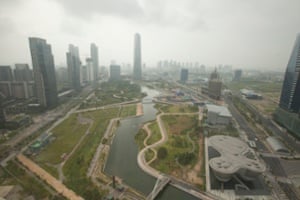
Some Final Thoughts and a Summary
This will be my 26th and final blog for this Sustainable Development course.
I have actually enjoyed writing about Sustainability issues more than I ever thought I would. It is because these issues are evolving and gathering steam in our current lifestyle, and you cannot help but be interested and even a little disappointed in how they have been approached by Governments, organisations and individuals.
I want to summarise some of my thoughts and elaborate on my what I believe is one of our biggest issues. I know that some of the topics I covered were similar to my Group Project for this semester, however I ensured that I did my own specific research and analysed other aspects of traffic congestion.
A summary:
- While high rise living is becoming more popular in Sydney and Australia, it will never be as popular as living out of the city, out of the busy city and in leafy suburbia. However, space and cost has become a huge issue and this has prompted the Government to utilise its considerable resources and flex its muscles. 'Planned Growth Areas' and urban renewal projects are just some of the changes that will dictate how Sydney will look like in 30 years.
- Cars are not the answer to our traffic problems.
- The push for Green Buildings is encouraging. Yet new developments and projects such as Green Square, Barangaroo and others need to put more on the table than being 'Green' and sustainable. They need to be integrated into the historical and cultural area, they need to offer employment and they need to make the lives of the community better.
- Cities such as Vienna show us that anything is possible in creating liveable, loveable cities where the environment and people can live sustainably.
- Technology has the potential to solve a number of our sustainability problems, yet we must not get carried away. Bridj, the car sharing service that I researched, is one such example of an amazing invention by a young entrepreneur.
- Smart Cities are our future, it is only a question of when they will be implemented. They have the potential to help Cities in so many different ways. Traffic, infrastructure, connectivity will all be improved.
Our group project was on Traffic Congestion in Sydney's CBD and it was this area that I was particularly interested in.
I discussed cycling, public transport and walking as alternatives to driving. I came to the conclusion that we cannot rely on cars as our saviour. They have been our downfall.
Urban sprawl would never have worked if we did not have the Automobile. We rely on cars to go further and further, so we can live further and further away from our work and our community. They are behind so many of our issues.
This blog and my research has taught me that we need to push for new alternatives, new ideas and to constantly challenge our Governments and people in positions of power to ensure that we create a sustainable future in our cities and our in our lives.





